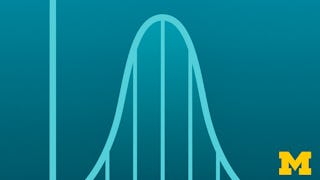This course introduces Python programming and fundamental statistics concepts, equipping learners with essential skills for data-driven roles in tech and AI. Through hands-on experience, you'll learn how to manipulate data, visualize insights, and apply statistical techniques for data analysis.


Python and Statistics Foundations
This course is part of Mastering AI: Neural Nets, Vision System, Speech Recognition Specialization

Instructor: Edureka
Included with
Recommended experience
What you'll learn
Write Python programs using core concepts like variables, data types, and control flow.
Apply NumPy and Pandas to manipulate and analyze data efficiently.
Create insightful data visualizations using Matplotlib, Seaborn, and Plotly for effective reporting.
Perform statistical analysis and probability tests to solve data-driven problems and validate hypotheses.
Skills you'll gain
- Exploratory Data Analysis
- Seaborn
- Data Analysis
- Statistical Hypothesis Testing
- Statistics
- Descriptive Statistics
- Probability & Statistics
- Probability Distribution
- Data Visualization
- NumPy
- Programming Principles
- Data Visualization Software
- Pandas (Python Package)
- Statistical Analysis
- Python Programming
- Plotly
- Matplotlib
- Data Science
Details to know

Add to your LinkedIn profile
16 assignments
See how employees at top companies are mastering in-demand skills

Build your subject-matter expertise
- Learn new concepts from industry experts
- Gain a foundational understanding of a subject or tool
- Develop job-relevant skills with hands-on projects
- Earn a shareable career certificate

There are 4 modules in this course
Welcome to Python and Statistics Foundations, the first course in the AI Exploration program's series! This module is designed to help learners take a significant step towards launching their careers in tech. In the first week, we'll explore how Python programming concepts are essential for creating efficient programs. Let's get started!
What's included
25 videos7 readings5 assignments1 discussion prompt
In the second week of this course, Learn how to manipulate data using NumPy and Pandas, working with various data formats. Gain proficiency in visualizing data using a range of charts and graphics.
What's included
26 videos4 readings5 assignments1 discussion prompt
In the third week of this course, we'll delve into statistics and probability. We'll explore measures of central tendency to handle various data inconsistencies. Additionally, we'll cover topics such as joint and marginal probability, as well as the fundamentals of hypothesis testing.
What's included
20 videos3 readings5 assignments
This module is designed to assess an individual on the various concepts and teachings covered in this course. Evaluate your knowledge with a comprehensive graded quiz on Python programming concepts, Data manipulation with NumPy and Pandas with Statistical Analysis
What's included
1 video1 reading1 assignment1 discussion prompt
Earn a career certificate
Add this credential to your LinkedIn profile, resume, or CV. Share it on social media and in your performance review.
Explore more from Data Analysis
 Status: Preview
Status: PreviewSimplilearn
 Status: Free Trial
Status: Free TrialGoogle
 Status: Free Trial
Status: Free TrialUniversity of Michigan
Why people choose Coursera for their career





Open new doors with Coursera Plus
Unlimited access to 10,000+ world-class courses, hands-on projects, and job-ready certificate programs - all included in your subscription
Advance your career with an online degree
Earn a degree from world-class universities - 100% online
Join over 3,400 global companies that choose Coursera for Business
Upskill your employees to excel in the digital economy
Frequently asked questions
This course provides an introduction to Python programming and essential statistical concepts. Designed for Python enthusiasts, it emphasizes practical skills for data manipulation and analysis, enabling learners to tackle real-world data challenges.
Learners will explore Python fundamentals, harness libraries like NumPy and Pandas for efficient data handling, and utilize visualization tools such as Matplotlib, Seaborn, and Plotly to present their findings. Additionally, the course covers key statistical methods and probability theory, equipping you with the tools to make data-driven decisions.
By the end of the course, you'll be well-prepared to apply these skills in various data analysis scenarios, setting a foundation for further studies in data science and artificial intelligence.
This course is designed for:
- Freshers looking to enter the fields of data analysis, data science, or artificial intelligence.
- Individuals with a keen interest in programming and statistics who want to enhance their technical skills.
- Professionals seeking to upskill in Python and data manipulation for practical applications in their careers.
- Anyone curious about data and eager to learn how to analyze and visualize it effectively.
Whether you're starting your tech journey or looking to build a strong foundation, this course will guide you through the essentials of Python and statistics.
The Python and Statistics Foundations course spans approximately 15 hours in total and is designed to be completed at a pace of 3-4 hours per week. This allows learners to absorb the material effectively while balancing other commitments.
More questions
Financial aid available,


